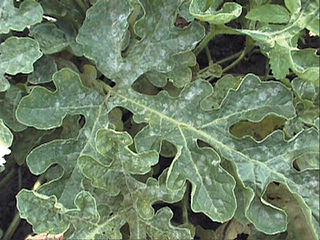
The giant anteater, also known as the ant bear, is an insectivorous mammal native to Central and South America. It is one of four living species of anteaters, the only extant member of the genus Myrmecophaga, and is classified with sloths in the order Pilosa. This species is mostly terrestrial, in contrast to other living anteaters and sloths, which are arboreal or semiarboreal. The giant anteater is the biggest of its family, 182 to 217 cm in length, with weights of 33 to 50 kg for males and 27 to 47 kg for females. It is recognizable by its elongated snout, bushy tail, long fore claws, and distinctively colored pelage.

The Asiatic salamanders are primitive salamanders found all over Asia, and in European Russia. They are closely related to the giant salamanders, with which they form the suborder Cryptobranchoidea. About half of hynobiids currently described are unique to Japan.

The black-legged kittiwake is a seabird species in the gull family Laridae.

The brown four-eyed opossum is a pouchless marsupial of the family Didelphidae. It is found in different forested habitats of Central and South America, from Nicaragua to Paraguay and northern Argentina, including southeastern Colombia, western Brazil and eastern Peru and Bolivia, at elevations from sea level to 1500 m. It is the only recognized species in the genus Metachirus, but molecular phylogenetics studies suggest that it should probably be split into several species. Population densities are usually low, and it is uncommon in parts of Central America. A density of 25.6/km2 was reported near Manaus, Brazil. Its karyotype has 2n = 14 and FN = 24.

The common opossum, also called the southern or black-eared opossum or gambá, and sometimes called a possum, is a marsupial species living from the northeast of Mexico to Bolivia, including the Lesser Antilles, where it is called manicou. It prefers the woods, but can also live in fields and cities.

The Myrmecophagidae are a family of anteaters, the name being derived from the Ancient Greek words for 'ant' and 'eat'. Two genera and three species are in the family, consisting of the giant anteater, and the tamanduas. The fossil Eurotamandua from the Messel Pit in Germany may be an early anteater, but its status is currently debated.

The tube-lipped nectar bat is a bat from Ecuador. It was described in 2005. It has a remarkably long tongue, which it uses to drink nectar. It additionally consumes pollen and insects.

Salamandrella keyserlingii, the Siberian salamander, is a species of salamander found in Northeast Asia. It lives in wet woods and riparian groves.
Euparkerella tridactyla is a species of frog in the family Craugastoridae. It is endemic to Brazil. Its natural habitat is subtropical or tropical moist lowland forest. It is threatened by habitat loss.

Stumpffia tridactyla is a species of frog in the family Microhylidae. It is endemic to Madagascar. Its natural habitats are subtropical or tropical moist lowland forests, subtropical or tropical moist montane forests, and plantations. It is threatened by habitat loss,Stumpffia tridactyla with a snout-vent length of 8.6–12 mm (0.34–0.47 in),Stumpffia tridactyla is a terrestrial microhylid frog,its males average length is 10–11 mm (0.39–0.43 in)..
Syncope tridactyla is a species of frog in the family Microhylidae. It is found in the Amazon rainforest of Brazil, Peru, and Ecuador. Its natural habitat is tropical moist lowland forests. It is not present in modified habitats and is thereby locally threatened by habitat loss, but this is not considered to be a significant threat to the species as whole.

The three-toed jacamar is a species of bird in the family Galbulidae. It is monotypic within the genus Jacamaralcyon.

Anteater is a common name for the four extant mammal species of the suborder Vermilingua commonly known for eating ants and termites. The individual species have other names in English and other languages. Together with the sloths, they are within the order Pilosa. The name "anteater" is also colloquially applied to the unrelated aardvark, numbat, echidnas, pangolins and some members of the Oecobiidae.

Podosphaera is a genus of fungi in the family Erysiphaceae. Species in this genus are plant pathogens, causing powdery mildew.

Salamandrella is a genus of salamanders in the family Hynobiidae.
Merrifieldia tridactyla is a moth of the family Pterophoridae. It is known from most of Europe, as well as North Africa and Asia Minor.
Neotamandua is an extinct genus of anteaters that lived in the Miocene to Pliocene in South America.
Cheroscorpaena tridactyla, the Humpback waspfish, is a species of wasp scorpionfish found only in the Gulf of Papua where it is an inhabitant of coral reefs. This species grows to a length of 15 centimetres (5.9 in) TL. This species is the only known member of its genus.
The dark-backed mulch-slider is a species of skink found in Western Australia.









